|


Basically, supertots want to explore the environment around them, preferably with you or someone else to share in the fun. If they can't persuade you to play with them, they want you nearby to help when they need you. Usually they won't play by themselves in another room, which is fine, because not until they are almost three can they be trusted to play alone safely, and even then not for very long.
Some of the things supertots do not want to do are: play with toys they can't work, play in places where there are too many things they can't touch, be made to play with something a certain way by an overly zealous adult, and be interrupted in the middle of an activity in which they are involved. Some of the things they do like to do are shown here:
Waterplay
In addition to being highly educational, playing with water in the kitchen sink, bathtub, or outdoor wading pool is, for most children, bliss. Until your child learns a few precautionary rules, stay close by and participate. Rules depend on your child's abilities and where he or she is playing; some rules might be: don't touch the hot water faucet, don't throw water on the floor, don't stand up in the bathtub, don't splash people. Once your child knows the rules, stay nearby to make sure everything is safe and okay, but let him or her play essentially alone, with a few
occasional suggestions from you.
Favorite waterplay activities:
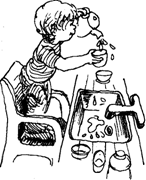 |
|
|
Pouring from and filling up containers -
"washing dishes" |
|
Giving the doll a bath and shampoo |

Give your child plastic bottles and dishes to wash, and let him
or her use whatever you use to wash them, a sponge or
dishcloth. If your child is using the sink, be sure he or she is
standing on a safe chair with arms. Stay nearby to keep an eye on things.
Waterplay toys:
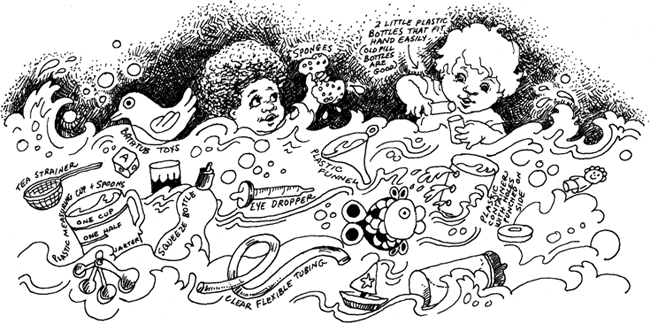
Sandplay
Sandplay, like waterplay, is a first-rate activity for supertots. It is creative, educational, and fun. Two rules should be taught: don't eat sand and don't throw it. To teach the rules, stop the undesired behavior when it starts, say the rule firmly, and suggest or show an alternative sand activity.
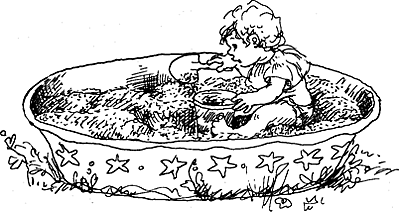
An easy way to make a sandbox is to fill an old tire or plastic wading pool with silver sand taken from a clean beach or bought from a hardware store, lumberyard, or gardening center. If you can't get sand, clean gravel will do. Turn a larger plastic pool over the sandbox at night to keep rain and animals out. The larger pool can be used for wading and waterplay during the day.
What supertots like to do in a sandbox:
 |
With dry sand:
Use scoops and shovels to fill containers.
Pour sand out of containers.
Load well-designed, easily dumpable dumptrucks up and them dump them out.
Make designs with sandcombs cut from cardboard (parent has to cut them).
Sweep up (if sandbox is inside or on patio). |
With wet sand:
Mix water and sand.
Mold things (an adult probably has to help); a good mold for a supertot is a paper cup because it is lightweight and small enough to hold in one hand.
Pat, shape, tunnel, poke.
Stick twigs and pebbles into wet sand (don't suggest pebbles if your child is likely to eat them).
Draw lines with sticks (teach your child to be careful with sticks, and don't leave a child unattended while playing with them). |
|
Play near you
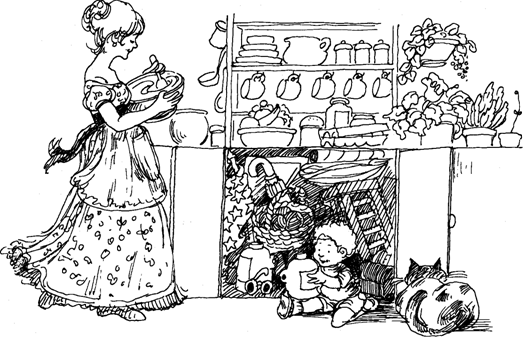
Supertots like to have things to do in the kitchen so they can be there when you're there. A low, easy-to-open cupboard filled with stuff is fun, especially if you change the contents around so that your child never knows what to expect. Some things you can put in there are: junk mail, clean hinges, clean plastic refrigerator containers, paper bags, old magazines for ripping, and commercial toys.
Try to help you
Children love to imitate you. If you provide them with small, safe replicas of the tools you use, they'll be delighted to work alongside you.
Cooking
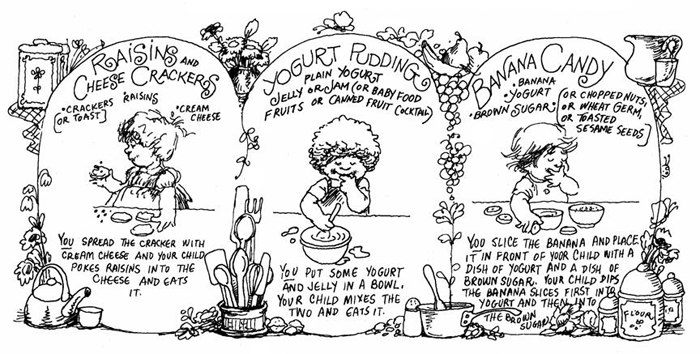
Homemade foods
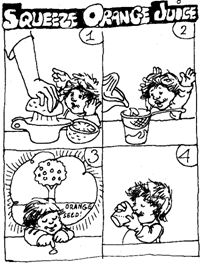
If you have a backyard, grow some lettuce and tomatoes. True, most supertots aren't crazy about salad,
but at least they'll know where it
comes from.
|
 |
|
|
Play outside
One- and two-year-olds cannot be trusted outside alone. They wander off to explore new ground, and they lack a sense of what might be dangerous even in their own backyard or park. You or a babysitter must watch them. To give you a break, make a large fenced-in area in the backyard. If the phone rings, you can run inside for a moment and watch your child from the window. If friends drop by, you can sit with them outside and still keep an eye on your child. If you do build a fence, think of the area inside of it as a playground. Provide various spots of interest and activity. Be sure everything is safe. You can buy various types of fencing at gardening centers and lumberyards. Don't buy anything too expensive if its purpose is just to fence in the play area; by the time your child is three, he or she won't stay in it. A chicken wire fence can be taken down at that time. |
|
Ideally, a supertot's play area would contain:
· a safe place to run around.
· a safe place to climb up and slide down
· a safe place to use riding toys
· a safe place to play with sand
· a safe place to swing
· a safe place to play with water
· a comfortable place for adults to sit and watch
|
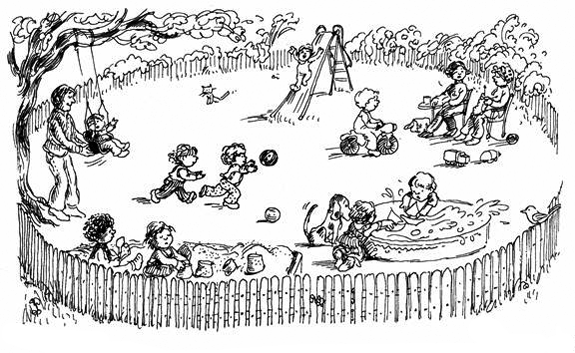
Crawl around on the ground with you
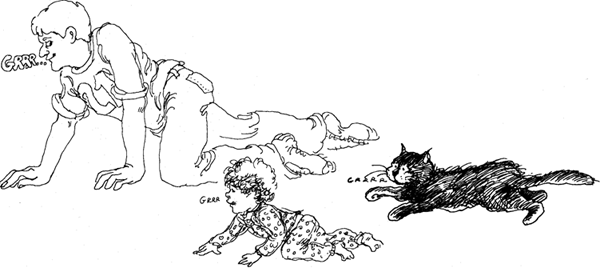
Although your child has probably passed through the crawling stage by the time you start to use this book, crawling practice is still good exercise. Some neurologists feel that cross-pattern crawling (opposite hand moves at the same time as the opposite knee) is necessary for full brain development. The mental ability to direct such a complicated set of actions as are required for crawling is strengthened by lots of crawling practice and may later be used for other kinds of complicated skills such as reading and writing. Crawling around on all fours may not look like a prereading activity, but some educators think it is.
Be quiet together
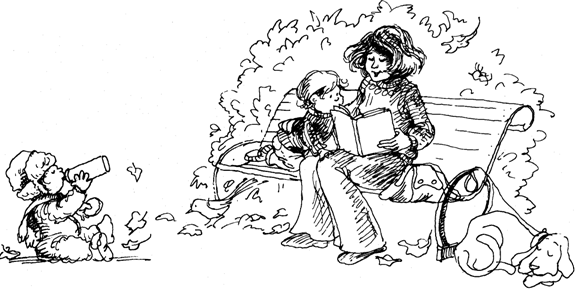
One- and two-year-olds like to alternate active, noisy, and busy periods of play with quiet, restful moments. When you go out, whether it be to the park or backyard, bring along a few things for quiet times.
What about TV?
Most supertots like to watch TV, and for short periods each day, watching TV can be a valid diversion. After an active afternoon of exploration and free play, for example, a child may enjoy watching Sesame Street while his or her parents get dinner. On their part, the parents are relieved that their child is safe, quiet, and learning something; but parents do have to be careful. Too much TV trains children to be TV zombies.
How to turn your child into a TV zombie
Have him or her watch TV all day long.
Have him or her watch it in a restricted place (highchair or playpen)
so there is no alternative but to watch.
Don't discuss anything with your child.
Don't watch TV with your child.
Let your child watch anything.
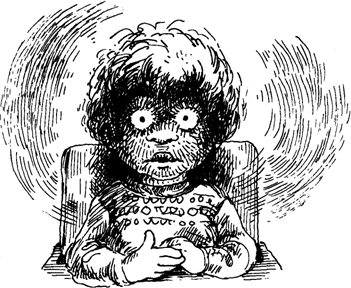
By the time your TV zombie starts school, he or she will have spent more hours watching TV than college graduates spend getting their diplomas. TV zombies often have trouble in school because they are fidgety, clumsy, and easily distracted. Add up the hours. Two hours a day, seven days a week, is fourteen hours of TV a week. That's enough; indeed, many educators would say that's too much for young children, who learn not from TV but from moving around and playing with real things.
You may notice that young children often watch TV for only short periods. After they have wandered off and become engaged in another activity, turn the TV off. Don't have the noise a constant part of the auditory background in your home. That will teach your child how not to listen to what's going on. On the other hand, some children like certain portions of a show but dislike others. Documentary film parts of shows such as Sesame Street are hard for little children to pay attention to. Be sure they have toys around so they won't learn to watch what bores them.
If you let your children watch TV (many educators think you shouldn't), be sure to teach them how to watch it. Attitudes about discriminating viewing can be learned early. Children can learn about the media itself as well as the content of anyone show, but you will have to help. Talk about TV and TV shows with them.
An example of talking about a particular show: |
An example of talking about the media: |
 |
|
An example of talking about commercial advertisements:
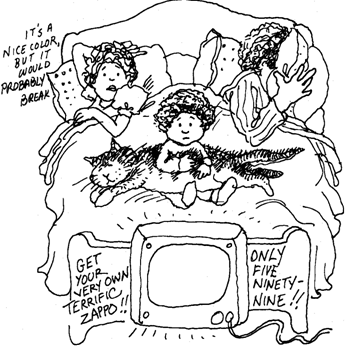
To protest crummy children's programming and crummy commercial advertisements on children's TV, contact the ACT (Action for Children's Television) at http://www.museum.tv/eotvsection.php?entrycode=actionforch.

CLICK HERE for Chapter Four: Making Toys Together |

